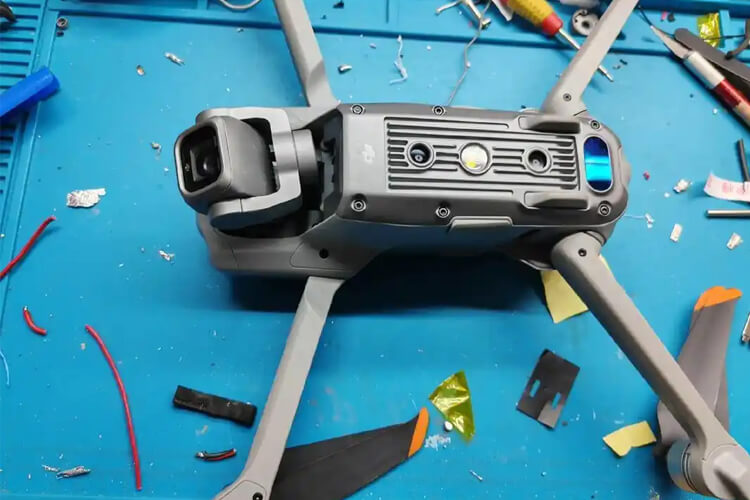Why Drone Maintenance Matters
Drones, often referred to as “flying cameras,” have become essential tools for aerial photography, mapping, inspections, and even entertainment. But while drone technology is advancing rapidly, keeping a drone in top condition remains a challenge. For beginners, even a minor mistake can result in crashes or costly damage.
That’s why regular drone maintenance is critical. Proper care not only extends the lifespan of your drone but also ensures flight safety, stability, and optimal performance. Recently, we received a DJI Air 2S drone from one of our community members, which gave us the perfect chance to showcase how professional engineers carry out detailed maintenance and inspections.

Understanding Drone Structure Before Maintenance
To maintain a drone effectively, it’s important to first understand its core components:
-
Flight Control System – the “brain” that stabilizes and directs the drone.
-
Powertrain – motors, ESCs (Electronic Speed Controllers), and propellers that keep it airborne.
-
Airframe – the physical structure supporting all components.
-
Sensors & Modules – GPS, IMU, obstacle avoidance, and gimbal system for navigation and imaging.
During maintenance, each of these parts must be carefully inspected, cleaned, and, if necessary, repaired or replaced.
Step-by-Step Drone Maintenance Process
Professional drone servicing typically follows a structured workflow:
-
Disassembly – Carefully remove the drone’s shell, propellers, and battery to access internal components.
-
Inspection – Check for damage, loose connections, worn-out cables, or dust affecting sensors.
-
Repair & Replacement – Fix damaged parts or replace modules such as gimbals, GPS, or ESC boards.
-
Reassembly – Put everything back with precision, ensuring stability and proper calibration.
Advanced Maintenance Techniques
Once you’ve mastered the basics, improving your professional repair skills involves:
-
Learning how to safely disconnect fragile ribbon and coaxial cables.
-
Performing detailed diagnostics on the flight controller and IMU.
-
Testing motors and ESC boards for overheating or irregular power output.
-
Recalibrating sensors after reassembly for stable flight performance.
Think of drone maintenance as solving a complex puzzle—every piece must fit perfectly to ensure safety and reliability.
Key Focus Areas During Maintenance
Every step requires patience, precision, and attention to detail:
-
Disassembly – Avoid forcing parts apart to prevent hidden damage.
-
Inspection – Look for subtle cracks, corrosion, or dust that can affect performance.
-
Repair – Use the right tools and replacement parts to ensure durability.
-
Assembly – Confirm all screws, cables, and connectors are securely in place before testing.
Professional technicians often use high-speed cameras and magnification tools to review each step, ensuring no detail is overlooked. This meticulous approach guarantees drones are flight-ready and reliable.
Final Thoughts: Building Drone Maintenance Expertise
Drone maintenance is more than just repair—it’s about building confidence in flight safety. Whether you’re a beginner learning the basics or an expert aiming to refine your skills, following a systematic maintenance routine is the best way to keep drones in top condition.
By combining careful disassembly, precise inspections, expert repairs, and accurate reassembly, drone operators can ensure long-lasting performance and prevent unexpected failures during flight.
👉 With consistent practice and attention to detail, you’ll move from a beginner to a master in drone maintenance—keeping your drone safe, stable, and always ready for the skies.









